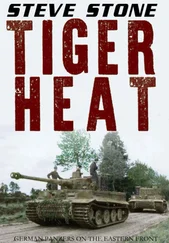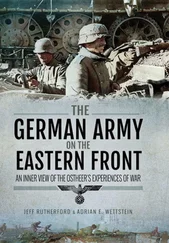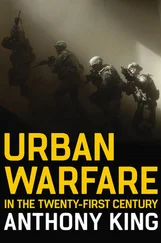The Germans had totally discounted the severity of the weather in the Soviet Union and were shocked in turn by the summer heat, the autumn mud and the harsh winter cold. Mud in particular is the bane of the existence of all tankers, but the idea that it only interfered with German mobile operations and that it was only a problem during the autumn and spring Rasputitsa season is an oversimplification that has been accepted for too long in Western historiography about the Eastern Front. First of all, the Eastern Front stretched over 1,700km from Leningrad to the Crimea and the weather could vary considerably across regions; a typical rain system would cover a 400–500km wide area, but other areas received no rain (or snow). Weather fronts moved from west to east across Russia, meaning that bad weather would generally hit the Germans first. Second, the summer months of June–July tended to have the most rain, but April and May were the driest months. In 1941, Heeresgruppe Süd had twice as much rain in July as it did in September–October, and mud caused significant mobility problems in the summer as well. When mud occurred, the wheeled vehicles in armoured units and towed artillery pieces were likely to be the most affected, but tracked vehicles could generally move until the mud became so deep that the tank either scraped bottom or the roadwheels became too fouled with mud.
When the supply trucks couldn’t make it through the mud, armoured operations ground to a halt from lack of supplies and ammunition. Oftentimes, SPW half tracks had to be diverted from their primary combat tasks of transporting infantry to making supply runs through muddy areas or going to pull mired trucks out. Routine track maintenance became much more difficult when everything was caked in thick, gooey mud. Soviet tankers also complained about the mud and it significantly affected their operations as well. The main Soviet tanks in 1941 – the T-26 and BT-7 – had even narrower tracks and less engine power than the German Pz.III, meaning that most Red Army tank units in 1941 were more prone to being impeded by muddy roads. Since Soviet tank brigades in 1941–42 consisted of mixed vehicle types, the superior T-34s would still have to travel at the rate of the slower light tanks.
The first snow arrived over the Eastern Front in October 1941, but in most areas it consisted of only 5cm and turned to rain within twenty-four hours. There were only two or three days with snow in October, with more falling in the humid Ukraine than around Leningrad. Snowfall in November jumped to about 20cm in central Russia, but the heaviest snowfalls did not occur until December–February. German equipment was designed to operate in temperate areas and proved unsuited to cold-weather operations in Russia. Panzer crews were particularly shocked to find that their tracks could literally freeze to the ground in winter months or their batteries crack when the fluid inside froze. The Czech-built Pz.35(t) used a hydraulic system that literally froze in October 1941, bringing that vehicle’s career to an abrupt end. When the German expectations of a short campaign were unfulfilled, the panzers were forced to conduct operations under all weather conditions, for which they were not psychologically or materially equipped.
Doctrinal and Technological Influences
During the interwar period, there were two contending schools of thought among major armies in regard to the proper employment of tanks. The dominant school was that tanks were best suited for the infantry support role and should be attached directly to infantry units. More revolutionary was the concept of armoured units that could operate independently, which was inspired in part by the theories of the British armour theorist, J.F.C. Fuller, and his Plan 1919. Fuller’s theories of mechanization, expounded in his interwar writings, attracted followers in both the Reichswehr and the Red Army. The proponents of creating independent armour units argued for looking beyond the breakthrough battle and for using tanks in a long-distance, exploitation role. However, this kind of radical thinking ran head-on into the powerful cavalry lobbies in both Germany and the Soviet Union, who regarded tanks as a threat to the mounted branch’s traditional use in the exploitation role. Both infantry and cavalry officers generally opposed the creation of independent tank units or tried to place limits on the kind of role they would serve. The infantry school argued for the development of infantry support tanks with a high level of armoured protection and had a howitzer-type weapon, but speed or range were not important requirements. Cavalry officers gradually accepted that tanks would be included in their country’s armed forces, but preferred light, fast tanks that could assist the cavalry in reconnaissance and pursuit roles. These intra-service debates about tank design crossed national lines and shaped tank development in Britain, the United States, France, Germany and the Soviet Union in the 1920s and 1930s.
Armour theorists gradually recognized that in order to develop effective tanks, both the infantry support and cavalry exploitation missions needed to be reconciled in technical requirements. The utopian idea of a single ‘universal tank’ that could successfully accomplish all missions was quickly determined to be unfeasible and theorists recognized that more than one type of tank would be necessary in order to fulfill armour’s potential on the battlefield. The infantry support mission required a tank that was equipped with weapons capable of engaging enemy infantry entrenched in fieldworks, bunkers or buildings. Given the high threat level from enemy artillery and anti-tank weapons, it would also be prudent for infantry support tanks to possess a high level of armoured protection. However, the exploitation mission suggested a tank with the primary requirements of speed and mobility. Most armies struggled with developing the right types of tanks, with the best characteristics and in the best mix to meet these mission requirements. Both the Red Army and the Reichswehr made choices about what tanks they wanted, based upon doctrinal and technological influences in the 1930s, which would shape battlefield outcomes in 1941–45.
Since Germany was not allowed to build or possess tanks due to the restrictions of the Treaty of Versailles after the First World War, the postwar Reichswehr made covert agreements with the Red Army to establish a tank training school at Kazan in 1929. The Red Army, which only had a handful of obsolete tanks left over from the First World War, was desperate to acquire foreign tank technology and willingly cooperated with the Reichswehr. During the four years that the Kazan school was operational, the Germans tested two different tank prototypes there and determined the necessity of mounting radios in every tank in order to exercise effective command and control over an armoured unit (the importance of this was further reinforced when German observers noted the successful use of radios in British pre-war tank exercises). German officers such as Erich von Manstein, Walter Model and Walter Nehring spent time in the Soviet Union and observed Soviet tank exercises, although this apparently did little to enhance their regard for the professionalism of Soviet tankers. As part of the deal for hosting the Kazan school, the Red Army acquired several 3.7cm Pak guns and the design for a 7.5cm anti-aircraft gun from the German firm Rheinmetall, which were used to bolster Soviet research on tank armament. The Soviets also acquired fuelinjection technology from Germany, which was used to enhance Konstantin F. Chelpan’s development of an experimental diesel tank engine at the Kharkov Locomotive Works. However, the Soviet leadership believed that the Germans were not sharing their best technology and finally closed the school in September 1933.
Читать дальше
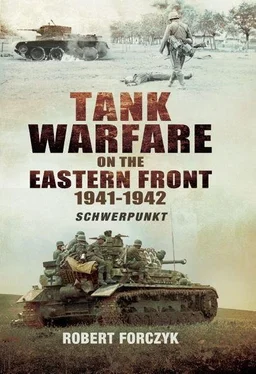

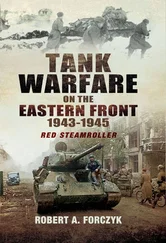
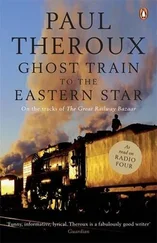
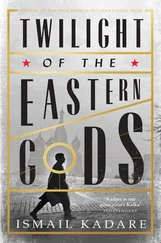
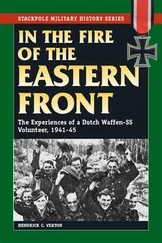

![John Stieber - Against the Odds - Survival on the Russian Front 1944-1945 [2nd Edition]](/books/405234/john-stieber-against-the-odds-survival-on-the-russian-front-1944-1945-2nd-edition-thumb.webp)
